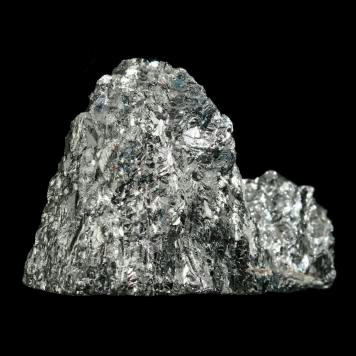◊
◊
◊
◊
Antimony fluoride is one of the most acidic known



| Sb | Z = 51 | ◊ ◊ ◊ ◊ ◊ |
Antimony | |
| From the Greek "antimonos", meaning "against aloneness" | ||||
| (AM) Atomic Mass | 121.757 amu | ♦ | +3, +5, -3 | |
| 1750 °C | ♦ | 630.7 °C | ||
| 6.62 g/cm3 | ♦ | Rhombohedral | ||
| 1.9 | ♦ | 1.38 Å | ||
| Solid | ♦ | (C) Heat Capacity | 0.207 J/g °C | |
| Electronic-Config | [Kr] 4d10 5s2 5p3 | ♦ | 833.73 kJ/mol | |
| 193.43 kJ/mol | ♦ | 19.79 kJ/mol | ||
| Known to the Ancients | ♦ | n/a | ||
| (E°) Standard Potential | SbO+ + 2 H+⇔ Sb + H2O (0.210 V), Sb + 3 H+⇔ SbH3 (-0.510 V) | |||
| Stable isotopes | 121Sb, 123Sb | |||
| Discovered/Synthesized by | Known since ancient times | |||
| Natural Source | The mineral/ore stibnite | |||
| Common Uses | Solders, lead hardener, batteries, bullet, semiconductors, photocells, matches, flame retardant | |||
| Other Info | Latin name: Stilbium Antimony fluoride is one of the most acidic known |
|||
Previous Element |
 |
Next Element |
||
| Back to Table |
Common Properties |
|||
| Home Page |
Definitions |
|||